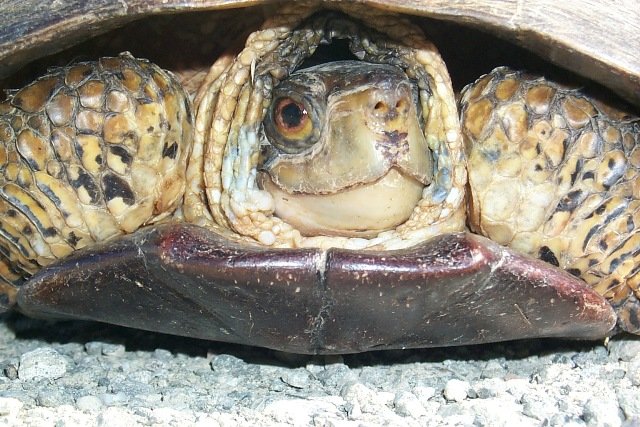Imperiled Species of the Klamath-Siskiyou
Many imperiled wildlife and plant species rely upon large blocks of intact forest to provide habitat and sustenance necessary to thrive and reproduce. These large blocks of habitat often provide a “source habitat” for wildlife contributing to population stability and recovery. Conservation efforts in the KS have protected large wildlife habitat and botanical hotspots associated with the Kalmiopsis, Marble Mountains, Siskiyou Crest, Trinity Alps, and the Cascade Range.
The east-west ridgeline of the Siskiyou Crest Mountains provides a vitally important wildlife corridor, linking the Cascades and the Coast Ranges and increasing the wildlife diversity in the area. Indeed, the Siskiyou Crest allows genetic flow between the large wildlands of the region and provides for mobility and habitat niches in the face of climate change.
Explore imperiled species of the Klamath-Siskiyou bioregion:
Pacific fisher
The Pacific fisher (Martes pennanti), an ecologically important forest carnivore, lives in low elevation old-growth forests of the northern U.S. & Canada.
Siskiyou mountain salamander
Siskiyou Mountains salamander (Plethodon stormi) is our KS Wild mascot! It is endemic to northern Siskiyou County, California, and southern Jackson Country, Oregon.
Wildlife defense in the KS
Each of our programs, Forest Watch, Climate, Rogue Riverkeeper, and Stewardship, work to safeguard wildlife in very different capacities. When you donate to our Wildlife Defense Fund, you are donating to each of our programs’ efforts to sustain endangered life in this special region we call the Klamath-Siskiyou.
Franklin’s bumblebee
Climate change and destruction of habitat have led to a decline in both the range and availability of the Franklin’s favorite flowers, which has dramatically affected the Franklin’s bumblebee’s (Bombus franklini) survival.
Humboldt marten
Cat-sized with a luxurious light-brown coat, yellowish chest “bib”, triangular ears and a long tail, the Humboldt marten (Americana humboldtensis) is a member of the weasel family and a subspecies of the American marten.
Learn about our programs
-
Over the past decade, KS Wild’s Forest Watch program has kept tens of thousands of acres of native forests standing for climate, wildlife, ecological, and native values.
-
KS Wild’s Climate program is shaping policies and local practices to best prepare the Klamath-Siskiyou region for climate change that threatens the biological diversity and watershed health of the region.
-
Rogue Riverkeeper has been working to protect, defend, and restore clean water, native fish, and healthy communities in the Rogue River Basin for the past decade.
-
The Klamath-Siskiyou bioregion hosts some of the most spectacular biodiversity in the nation. Our Stewardship program works to protect and defend these imperiled plant species in designated Botanical Areas.
northern spotted owl
The northern spotted owl (Occidentalis caurina) has been at the center of forest management debate because of its dependence on classic old-growth forest characteristics for roosting, foraging and nesting, its role as an ‘indicator species’ for forest health, and the continual fragmentation and loss of its habitat throughout the Pacific Northwest.
Green Sturgeon
Green Sturgeon (Acipenser medirostris) are truly a prehistoric creature, possessing a skeleton that is more cartilage than bone and rows of bony plates for protection rather than scales.
Gentner's Fritillary
Gentner’s fritillary (Fritillaria gentneri) is a red-flowering herb that is part of the Liliaceae or lily family. It is endemic (found nowhere else but here) to southern Oregon and northern California.
pacific lamprey
Pacific lamprey (Lampetra tridentata) is a parasitic eel-like species that has no true jaw, bones or fins. Populations have declined in the last forty years.
California pitcher plant
The California pitcher plant, or Cobra Lily, (Darlingtonia californica), is a rare carnivorous plant of serpentine wetland communities
wolverine
North American wolverines (Gulo gulo) have been listed as a threatened species in Oregon by the Oregon Department of Fish and Wildlife since 1989. In December 2000, KS Wild and a coalition of groups, led by the Center for Biological Diversity, filed a lawsuit against the U.S. Fish and Wildlife Service for failing to list this wildlands-dependent forest carnivore.
Kalmiopsis leachiana
Kalmiopsis leachiana, a plant discovered in 1930 by Lilla Leech in the Gold Basin area, is a relic of the pre-ice age and the oldest known member of the Heath (Ericaceae) Family.
marbled murrelet
The marbled murrelet (Brachyeamphus marmoratus) is a pacific seabird that nests in trees in older coastal forests in North America and Asia that contains migratory and resident populations.
red tree vole
The red tree vole (Arborimus longicaudus) is a small rodent found in the coastal mountains and western Cascades of Oregon.
Yreka phlox
Yreka phlox (Phlox hirsuta) is a perennial subshrub in the Phlox or Polemoniaceae family that is endemic to Siskiyou County, California.


















